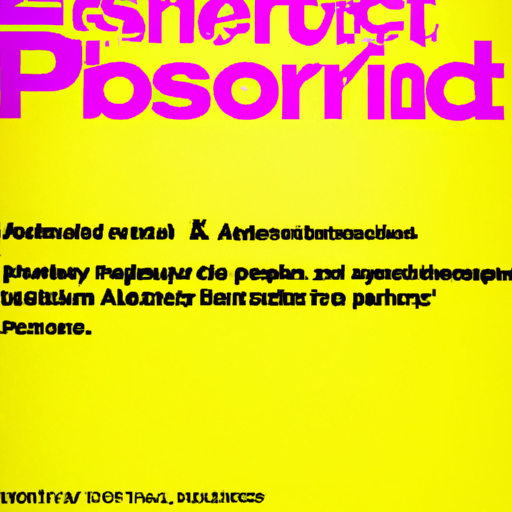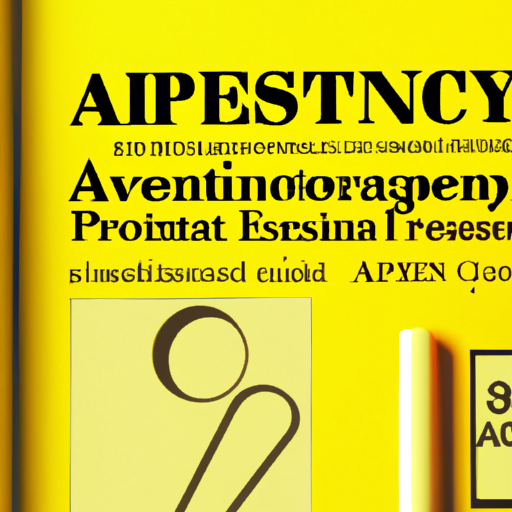
-
Table of Contents
- Typography in Package Inserts: Presenting Essential Information
- The Power of Typography
- Best Practices for Typography in Package Inserts
- 1. Choose Appropriate Fonts
- 2. Pay Attention to Font Sizes
- 3. Utilize White Space
- 4. Use Hierarchy and Formatting
- 5. Consider Color and Contrast
- Case Studies: Effective Typography in Package Inserts
- Case Study 1: Apple
- Case Study 2: IKEA
- Conclusion
Typography in Package Inserts: Presenting Essential Information

When it comes to package inserts, typography plays a crucial role in effectively presenting essential information to consumers. The way information is displayed can greatly impact a consumer’s understanding and perception of a product. In this article, we will explore the importance of typography in package inserts and how it can be used to enhance communication and engagement with consumers.
The Power of Typography
Typography is more than just selecting a font or arranging text on a page. It is a powerful tool that can evoke emotions, convey messages, and enhance readability. In the context of package inserts, typography can make a significant difference in how consumers perceive and interact with the information provided.
Here are some key reasons why typography is important in package inserts:
- Readability: The primary purpose of typography is to make text legible and easy to read. By choosing appropriate fonts, font sizes, and line spacing, package inserts can ensure that consumers can easily understand the information presented.
- Organization: Typography helps in organizing information in a logical and structured manner. Headings, subheadings, and bullet points can be used to break down complex information into digestible chunks, making it easier for consumers to navigate and find the information they need.
- Visual Hierarchy: Through typography, package inserts can establish a visual hierarchy that guides consumers’ attention to the most important information. By using different font sizes, weights, and styles, essential details can be emphasized, ensuring that consumers don’t miss critical information.
- Brand Identity: Typography is an integral part of a brand’s identity. Consistent use of fonts and typography styles in package inserts helps reinforce brand recognition and creates a cohesive visual experience for consumers.
Best Practices for Typography in Package Inserts
Now that we understand the importance of typography in package inserts, let’s explore some best practices that can help optimize the presentation of essential information:
1. Choose Appropriate Fonts
The choice of fonts can significantly impact the readability and overall perception of a package insert. It is essential to select fonts that are clear, legible, and align with the brand’s identity. Sans-serif fonts like Arial or Helvetica are commonly used for body text due to their simplicity and readability. However, serif fonts like Times New Roman can be used for headings to add a touch of elegance.
2. Pay Attention to Font Sizes
Font sizes should be carefully considered to ensure readability. The body text should generally be set between 10-12 points, while headings can be larger to create visual contrast. However, it is important to strike a balance between readability and aesthetics. Using excessively large or small font sizes can hinder comprehension and create a negative user experience.
3. Utilize White Space
White space, also known as negative space, refers to the empty areas between elements on a page. It is a powerful design element that can enhance readability and create a sense of visual balance. By incorporating ample white space in package inserts, the text becomes less cluttered, making it easier for consumers to focus on the essential information.
4. Use Hierarchy and Formatting
Creating a clear hierarchy through typography helps consumers navigate the package insert and find the information they need quickly. Headings and subheadings should be visually distinct from the body text, using larger font sizes, bold or italic styles, or different colors. Bullet points and numbered lists can also be used to break down information into easily scannable chunks.
5. Consider Color and Contrast
Color can be used strategically to enhance the visual appeal and readability of package inserts. However, it is important to ensure sufficient contrast between the text and background to maintain legibility. High contrast between text and background colors, such as black text on a white background, is generally recommended. Additionally, using color sparingly to highlight important information can draw attention and improve comprehension.
Case Studies: Effective Typography in Package Inserts
Let’s take a look at two case studies that demonstrate the impact of typography in package inserts:
Case Study 1: Apple
Apple is known for its sleek and minimalist design aesthetic, which extends to its package inserts. The typography used in Apple’s product inserts is clean, simple, and consistent with the brand’s overall identity. The use of sans-serif fonts, ample white space, and clear hierarchy makes the information easily scannable and digestible for consumers. Apple’s package inserts effectively convey essential information while maintaining a visually appealing and cohesive design.
Case Study 2: IKEA
IKEA, a global furniture retailer, is renowned for its user-friendly instructions and package inserts. Typography plays a crucial role in IKEA’s package inserts by breaking down complex assembly instructions into manageable steps. Clear headings, bullet points, and numbered lists are used to guide consumers through the process, ensuring that they can easily understand and follow the instructions. IKEA’s effective use of typography in package inserts contributes to a positive user experience and reduces frustration.
Conclusion
Typography is a powerful tool that can greatly enhance the presentation of essential information in package inserts. By prioritizing readability, organization, visual hierarchy, and brand identity, package inserts can effectively communicate with consumers and improve their overall experience. Through the careful selection of fonts, font sizes, white space, hierarchy, and color, package inserts can become more engaging, informative, and user-friendly. By implementing best practices and drawing inspiration from successful case studies, brands can leverage typography to create compelling package inserts that leave a lasting impression on consumers.
